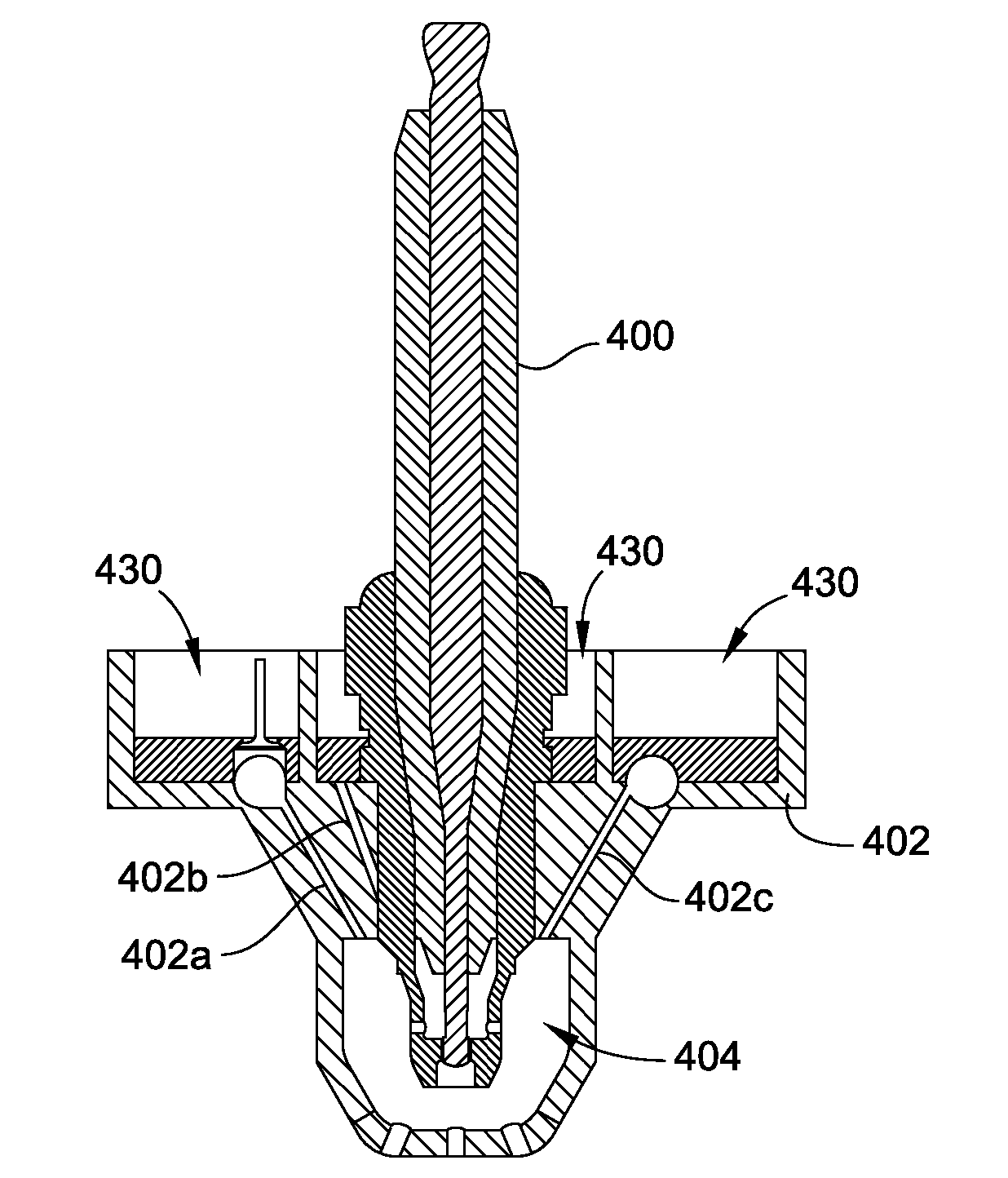Controlled Spark Ignited Flame Kernel Flow in Fuel-Fed Prechambers
- Summary
- Abstract
- Description
- Claims
- Application Information
AI Technical Summary
Benefits of technology
Problems solved by technology
Method used
Image
Examples
Embodiment Construction
[0038]To address the issues of a repeatable and controllable ignition delay time during the combustion process, which results in both a more efficient combustion process and longer life for the spark plug, a pre-chamber spark plug has been developed that incorporates a tubular electrode to control the flame kernel development, ignition delay time, flame jet evolution, main combustion chamber burn rate, and consequently improves engine performance. The delay time is the period between the spark and that time when the combustion affects a volume sufficient to increase the pressure in the pre-chamber and in turn the main combustion chamber.
[0039]FIG. 1 illustrates a cross-sectional view of a portion of a pre-chamber spark plug 100, according to an embodiment of the invention. The pre-chamber spark plug 100 has a longitudinal axis 101 and a center electrode 102 that extends along the longitudinal axis 101, and further extends from an insulator 104 into a pre-combustion chamber that is d...
PUM
 Login to View More
Login to View More Abstract
Description
Claims
Application Information
 Login to View More
Login to View More - R&D
- Intellectual Property
- Life Sciences
- Materials
- Tech Scout
- Unparalleled Data Quality
- Higher Quality Content
- 60% Fewer Hallucinations
Browse by: Latest US Patents, China's latest patents, Technical Efficacy Thesaurus, Application Domain, Technology Topic, Popular Technical Reports.
© 2025 PatSnap. All rights reserved.Legal|Privacy policy|Modern Slavery Act Transparency Statement|Sitemap|About US| Contact US: help@patsnap.com



